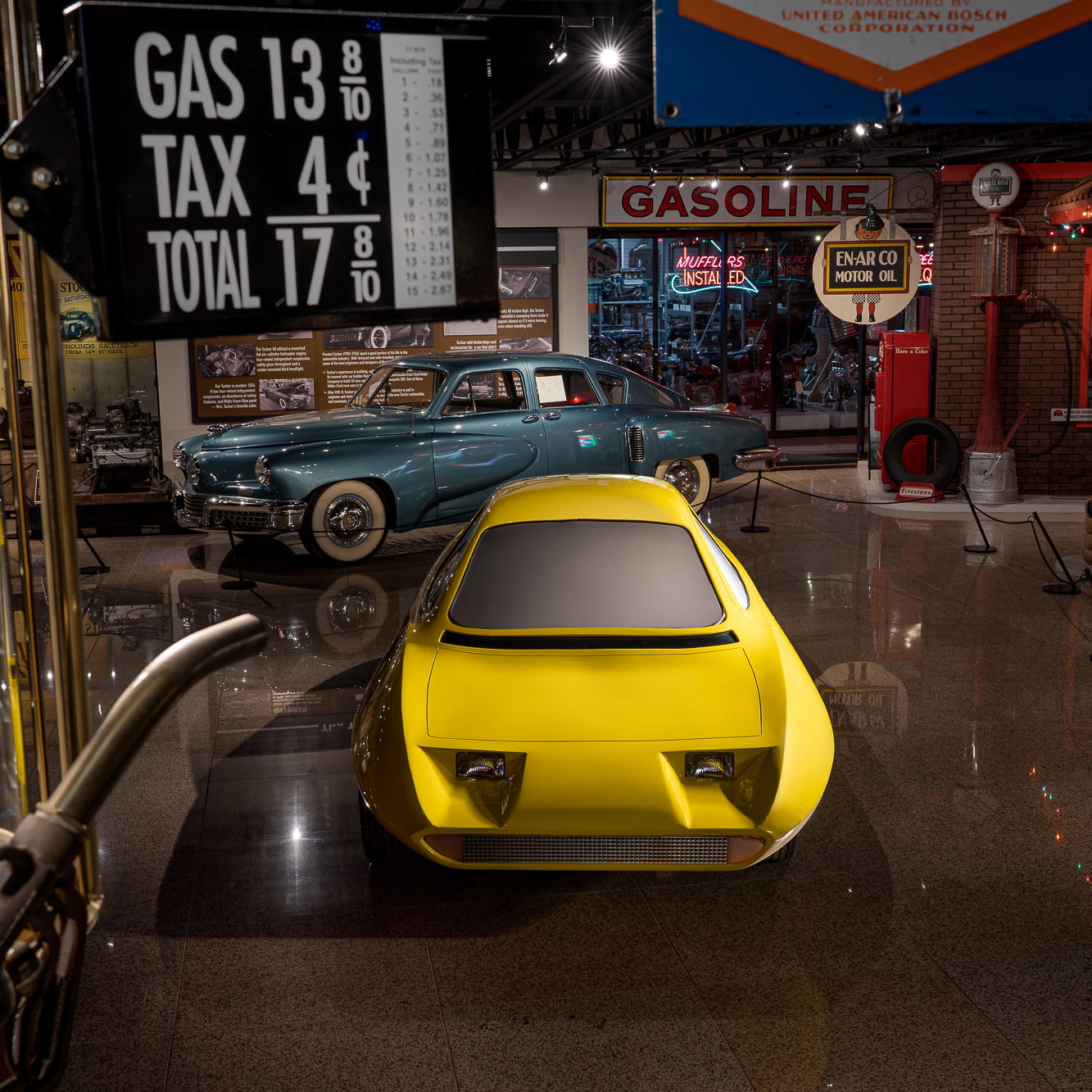A prototype, three-wheeled moto-car from 70s, called The Dale, is now gaining popularity for its unique design and interesting back story. HBO is even currently airing a documentary called The Lady and the Dale, and it’s causing one obscure little yellow car in the collection of the Museum of American Speed to have an unexpected moment of fame. Envisioned in 1974 by entrepreneur Geraldine Elizabeth Carmichael, only two prototype vehicles of the Dale were ever made, and they’re still being talked about today. The story of the Dale is one of the most bizarre in the history of the American automobile.
1974 was not an awesome time to be an American car maker. There was a crippling gas shortage and American cars had, quite inconveniently, become giant, gas-hungry behemoths. It was becoming increasingly difficult to find gas, let alone afford it.
As keeping gas in that big-block powered luxo-barge began to chew up the kids’ college fund, people starting looking for gas alternatives. One man’s solution was to start riding his vastly more fuel-efficient motorcycle to work. But Dale Clift got tired of getting wet whenever it rained. So, he did the only logical thing: build an enclosed, three wheeled contraption using a few motorcycle parts and a lot of imagination. When Dale and his car crossed paths with Liz Carmicheal, things really got interesting.
Liz took Dale’s idea and ran. She founded the 20th Century Motor Corporation, and their first car was to be a small, 3-wheeled car based on Dale Clift’s three wheeled moto-car. Liz’s incredible claims about the car brought quite a bit of publicity to the project. The Dale was supposed to be made of indestructible fiberglass, go 80 miles per hour, get 70 miles per gallon, and cost around $2000. The company started collecting deposits from eager buyers and raising money from investors. And they raised a lot of it. Something like $30 million.
What they forgot to do was get all the appropriate licenses, permits, and to actually make a car. A small group of engineers were busy trying to build a car that would match the hype. They cobbled together one running prototype that was at least partially functional, as well as a few painted and rolling fiberglass shells. The car you see pictured below is one of the mock-up versions.
And because no story from the 70’s is complete without mentioning The Price is Right, we’re happy to report that the very car you see pictured below actually appeared as a prize on the show in ’75. Fortunately for everyone, all the contestant’s guesses were way over the Dale’s alleged asking price, saving the lucky winner from the burden of hauling a non-functioning fiberglass lawn ornament home with them.
The inevitable reality began to catch up to the 20th Century Motor Corporation. The local news station and several concerned authorities started asking questions and not liking the answers that they were being given. As the house of cards began to fall, it was discovered that things were not at all what they appeared to be. The Lady and the Dale does a great job telling that story. Go watch it. We’ll wait.
So how did one of the four Dales created end up 1500 miles from LA in Lincoln, Nebraska? As you might expect, that’s an interesting story too, and it starts with Dean Moon. You know him, he was the founder of Moon Equipment company, the man behind some of the most iconic hot rod parts in the business, and the creator of the “Mooneyes” logo that you’ve seen on every hot rod ever.
After the spectacular implosion of the 20th Century Motor Corporation, this Dale somehow found its way to the roof of a California muffler shop. What it was doing there and how it got there may never be known, but when the shop closed its doors, Dean Moon was there to relieve them of the little fiberglass three-wheeler on their roof. He thought he could apply a little hot rod ingenuity and make a neat little kit car out of it.
Apparently, the California authorities were not ready to forgive and forget the whole Dale debacle, so they were a wee bit prickly when approached by Moon about licensing and other official matters. So, he called up his old friend Speedy Bill Smith in Nebraska, thinking he might have better luck.
It’s unclear just what Bill saw in the Dale, but one thing is clear. Speedy Bill had a knack for spotting strange, unusual, and cool automobilia. He built a museum around it. So, there’s little doubt that he saw more than just a weird little yellow car. Whatever the reason, the Dale came to live in Lincoln and has never left.
The Museum of American Speed exists to tell the story of the American automobile, and this is a story like no other.








